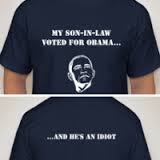 I’ve become obsessed with empathy. It did not happen overnight, and it will always remain an aspiration rather than a fait accompli. But personal crises, life lessons learned and a good deal of hard work have helped me to understand that the feelings of others are equally, if not more important, than my own.
I’ve become obsessed with empathy. It did not happen overnight, and it will always remain an aspiration rather than a fait accompli. But personal crises, life lessons learned and a good deal of hard work have helped me to understand that the feelings of others are equally, if not more important, than my own.
As I came to understood that a good deal of my past behavior was rooted in selfishness and motivated by insecurity, all my relationships – business, family, personal, romantic – improved dramatically. Perhaps I’m a late bloomer, but cockiness gave way to confidence, insecurity turned to contentment, and anger melted away into a sense of calm.
A funny thing happened along the way. I became a much better marketer.
What has to be one of my more profound lessons in empathy began when I was just 26 years old, what seems like a lifetime or two ago. I was on top of the world, working hard and playing hard as an up and coming Account Executive at a hot, creative agency called DKG, which had just been selected as Ad Age’s Agency Of The Year.
While I had grown up in the sleepy burbs, New York City was now my playground. I lived on the Upper West Side of Manhattan, which was bohemian, diverse and changing for the better, but still far evolving into the nearly sterile, gentrified neighborhood it is now. My friends and I hung out at O’Neals on 72nd & Columbus where we drank cheap glasses of beer and played pinball with Meatloaf, Roberta Flack and other neighborhood characters. Later in the night, we’d make our way a few blocks up Columbus Avenue and cross the street to Tap-A-Keg, a crowded hole in the wall with even cheaper beer and a great jukebox where we’d meet girls and dance until 4 in the morning.
It wasn’t unusual to sight John Lennon on the street, though I never had that good fortune. I was a huge fan, just living for the day I would bump into him and have a long conversation like we were old friends and understood each other perfectly. Unfortunately, I was doomed to multiple Yoko sightings instead.
We’d get out to explore other neighborhoods as well, riding the subway or sharing cabs down to exciting, emerging, newly hip neighborhoods like Soho and Chelsea. There were no Gaps, Starbucks or other retail chains lining the streets in those days. These were still somewhat sleepy neighborhoods, rough around the edges with a hint of danger, virtually no shopping, and just a few scattered hole-in-the wall bars and restaurants.
The city was electric and full of possibilities. I was in heaven. My job was great, my social life was exciting and I was lucky enough to live in the best neighborhood in the best city in the world. I had found my place.
Then, out of the blue, I got a call from at home one night from my client at Brown-Forman, asking me if I’d be interested in moving to Louisville, Kentucky to work directly for the company as a Brand Manager.
As sure as I was that I was already where I always belonged, it was going to be very difficult to turn down a huge bump in salary (it doubled while my cost of living would be cut nearly in half) and a great resume builder. It was a terrific opportunity, but more importantly, a huge boost to my ego. Not only would I be a very big fish in a small pond, I would now be the client and my former bosses would report to me! So despite some misgivings, I found myself living in Louisville just three months later.
I had no idea about the seismic culture shock that awaited me. Yes, I had been there on business many times, and there is no mistaking Louisville for New York City. It would obviously be a different lifestyle, but I had no idea that the major adjustments I would have to make had very little to do with my social life or anything tangible, and everything to do with my attitude.
I grew up on Long Island, moved with my family to Westchester County in the 9th grade, and went to college in the Chicago suburbs. By the time I had finished college and grad school, being the extrovert that I am, I had many friends and acquaintances covering a diverse range of race, ethnicity, religion, sexual orientation and political persuasion. After working in the NYC ad agency business for a few years, I thought of myself as worldly, sophisticated, and open-minded.
I wasn’t. Culture shocks filled my day-to-day existence for nearly a year after moving to Kentucky. “Jeff, what church do you go to?” was a question I was frequently asked when meeting new people. A perfectly reasonable question, unless it’s rhetorical, as I suspect it always was in my case. I would respond, “I’m Jewish, I don’t go to a church.” “Well, what Jewish church do you go to then?” was the inevitable reply, oozing so much condescension and contempt that it was quite ugly.
I had no clue about how isolated, sheltered and naive I was. I was shocked at the anti-Semitism, something I had never experienced before, and even more shocked at the overt racism. Reading about something in the newspapers and history books is one thing. Real life experience is something entirely different. I ran across many successful, highly educated business people who would use racial epithets or make outrageous racial slurs in business or social settings with no hint of shame or self-consciousness.
Brown Forman was proud to hold business dinners at the Pendennis Club in downtown Louisville, an institution that, at the time, had no Jewish, black or female members. To add insult to injury, the club refused to change its address when the city changed its street name to Muhammad Ali Boulevard to honor Louisville’s hometown hero. No, the Pendennis Club was still found on Walnut Street, despite the fact that that street name had not been used in years and no longer existed.
In one memorable presentation to senior management, the Southern Comfort brand manager was discussing a component of the brand’s “ethnic” media plan: transit advertising in the form of bus panels in Chicago’s African American neighborhoods. “I’m concerned,” a senior, non-marketing executive remarked. “What if that bus goes into a white neighborhood?”
I was quick to pass judgment on the values of others, and for very good reason much of the time. But I was also too quick to condemn people for simply not being like me when it came to much more innocent differences in perspective.
It wasn’t easy, but I tried my best not to be the quintessential wise-ass New Yorker when I arrived. Sure, there were no delis, no sushi, no bagels, virtually no ethnic restaurants, and not even staples like Thomas’s English Muffins in the supermarkets. But I didn’t complain. Well…maybe not too much. Rather, I tried to search out the classic local joints, explore the neighborhoods and fit in as best I could.
But when the enormous boost to my ego started to wear off, along with the adventure and novelty of living someplace entirely new, I started to feel lonely and isolated. I missed New York terribly – the intensity, the food, the culture and most of all, the people.
I cringed every time a native Louisvillian said “thee-ay-ter” instead of theater, “eye-talian” instead of Italian, and at the constant use of “you all” and its proper plural form, “your alls.” There was a fast food chain specializing in fried fish sandwiches, a Louisville favorite, called Moby Dick. Prominently displayed in the storefront window was a sign that flashed “Now Frying.” I called this Louisville sushi.
So for all my efforts to be open-minded and accepting, I secretly, or maybe not so secretly, harbored strong feelings of cultural and intellectual superiority. These are not terribly attractive traits for any person, but deadly for a marketer.
It is important for me to note that toward the end of my tenure at Brown-Forman, the company was already hard at work on the diversity front, having inaugurated a diligent, comprehensive effort to right past wrongs. They were actually ahead of the curve on these issues (as they were with technology and other important business concerns), and deserve great credit for building a truly diverse, open-minded corporate culture. And judging by their website, which explicitly rejects discrimination against any current or potential members, it seems that the Pendennis club may have reformed as well.
But with all the social progress we have made in this country, there is no denying that values, attitudes and behaviors may be even more polarized then ever between “red states” and “blue states.”
One only has to watch cable news on any given day to grasp this phenomenon, but a recent column in the New York Times, How Did Politics Get So Personal, by the Columbia University Journalism Professor and Times weekly contributor Thomas Edsall, exposes how deep this chasm in values has become, pointing out that “political hostility in the United States is more and more becoming personal hostility.”
A 2013 Gallup poll found that 87% of Americans approve of Black-White Marriage, vs. 4% in 1958. Contrast that with research cited in Edsall’s piece about intermarriage between members of political parties. In 1960, 4% or Democrats and 5% of Republicans said they would be “displeased” if their children married someone of the opposing party. In 2008, those percentages increased to 20% and 27%, respectively. And in 2010, 33% of Democrats and 49% of Republicans polled claimed that they would be “somewhat or very unhappy” should their children marry someone of the opposing party.
Those are astounding numbers! Could a remake of the film “Guess Who’s Coming To Dinner” be in the works? Instead of the white daughter bringing her African American boyfriend home to meet her parents, all hell breaks loose when the son of liberal Hollywood movers and shakers introduces his Republican girlfriend to the family.
I strongly suspect that bigotry of all kinds is severely underreported due to research respondents wanting to give politically correct answers, even when filling out confidential surveys online. Regardless, it seems that as we become more tolerant in some ways, we’re growing equally (or more) intolerant in others.
Fortunately, as my three-year stint in Louisville unfolded my arrogance dissipated and my attitudes softened. Certainly not toward racism and exclusion, but for those with whom I seemingly had absolutely nothing in common, I did my best to understand why they were so different from me and what made them tick.
I never lost my New York edge, but as I made friends outside of the workplace and found my community, I came to truly appreciate the city and its people. This was an important personal breakthrough – the ability to adapt, embrace my surroundings and ratchet the judgments way down. But it was equally important professionally.
I always find the most important marketing lessons learned are not those I read about in books or journals, but those that illuminate the complexity of human relationships as they unfold in real life.
As much as I love my New York State Of Mind – which I’ve kept despite living in Los Angeles for more than 25 years now – my Louisville experience taught me how important it was to leave this mindset behind when I put on my marketer hat. I thought I was sophisticated back when I worked with movers and shakers in the cooler than cool, privileged world of advertising, but in reality, I was terribly naïve. Sitting in my New York ad agency office I had believed, as did so many of my colleagues, that I knew better than everyone else. Especially those rubes in the heartland.
All too often, we created advertising that catered to our own sensibilities, not those of our target market. This is not a recipe for success, and the reason why many of the “hip,” “creative,” “hot” ad agencies are able to create effective work for upscale, sophisticated products (generally those they prefer themselves) while totally failing when it comes to packaged goods or other products for “the masses.”
After my fish out of water experience in Louisville, I started to grasped the irony of the New York, Chicago or Los Angeles based art director pacing the back room while watching focus groups, declaring, “Those consumers are stupid. They don’t get my ad.”
That’s right. They don’t get it. But it’s not their job to get us, is it? It’s our job to get them.
I know that I’ve evolved as a result of my time on the other side of the Mason-Dixon line. But it is still so easy for all of us to climb on our high horse to demean those with different beliefs. It’s not just me. Remember the firestorm Obama ignited with his “guns and religion” comments? Or when Mitt Romney talked about the “47 percent?” It happens to all of us, regardless of our politics or intentions.
As open minded and empathetic as I’d like to think I am, I am still not immune to sliding into value-based judgments from time to time as well. Recently single again, I realized that any woman on the dating websites claiming to be “conservative” “libertarian,” “Republican” or even “middle of the road” would not be getting a note from me. I also find myself blurting out that “I would never live in a red state” from time to time. I would also be one of those 33% of Democrats that would be “displeased” should my kids bring home Republican fiancés.
It’s foolish. While there are benefits to surrounding oneself with like-minded people, i.e., a community sharing common values and interests, living in a bubble is an illusion, creating a false sense of reality that imposes sharp limits on both personal and professional growth. We need to be vigilant about recognizing the ever-evolving nature of our culture and recognizing that the “good old days” – whatever that means to us personally – probably weren’t as good as we remember them. Indeed, that the world keeps changing – exposing us to new people, new technologies, new ideas and new cultural touchstones – it is more often a blessing than a curse.
There is a school of marketing that cynically dictates that consumers don’t matter. We’ll make what we want and people will buy our products because we know best. (If you think this sounds like Steve Jobs, you’re right. You can try this approach yourself, but I have to warn you …you’re no Steve Jobs.) I see this time and time again. Clients come to us with a new technology or new idea and tell us, “We can make this! Now, how do we sell it?” They are internally focused on their own capabilities rather than focused on the needs of consumers.
An empathetic approach is far better. That is, to uncover insights illuminating how the lives of our customers can be improved, even if it’s in very small ways. This requires the ability to break out of one’s bubble, keep a very open mind and think about the practical and emotional needs of others rather than our own. We like to talk about “pain points,” a common expression in marketing jargon these days, but do we really feel our consumers’ pain? Are we talking to them in language they understand without being patronizing?
This is extremely difficult to pull off if you’re a Chicago agency creating advertising for farm equipment, an LA agency building a website for accounting software or a New York agency selling beef jerky. These aren’t worlds those marketers typically dwell in, so it becomes a personal challenge to leave your sense of “coolness” at the door to fully embrace the world of your target.
In the most extreme case, are you capable of producing an ad that you hate – one that violates every one of your artistic sensibilities – because it truly reflects the values of your customers? That’s tough for anyone.
I have always believed that marketing is more art than science and that the best in our business are true artists. But this doesn’t mean that we should conflate the business we work in with art. We do not set out to make art, nor should we. Our job is to sell. True artists on the other hand must be dedicated to their bringing their personal visions to life, no matter what the commercial consequences.
Artists can afford to feel their own pain. Marketers cannot. While we must be able to draw on our personal experiences and instincts to market effectively, our personal feelings, at the end of the day, are meaningless.




